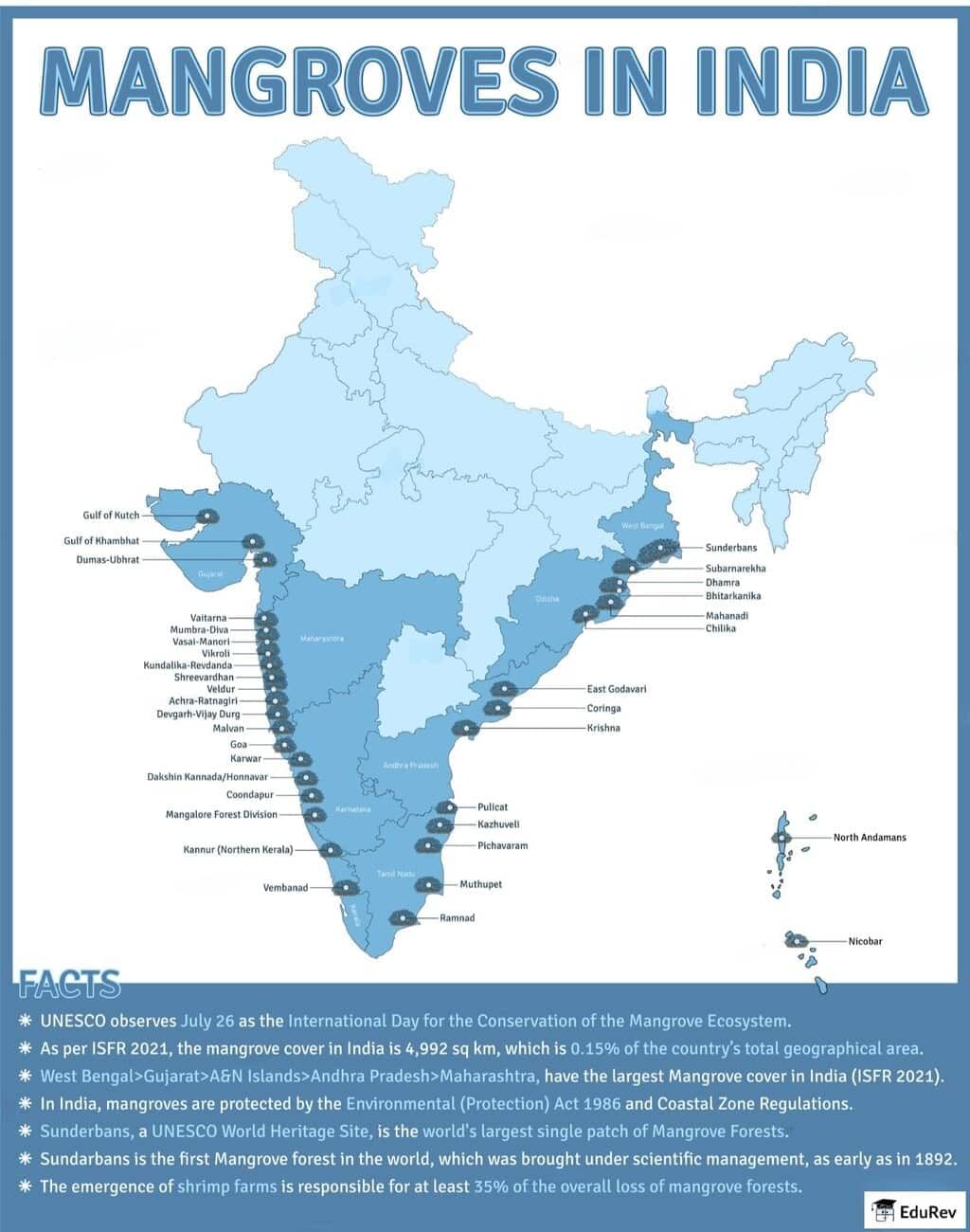UPSC Exam > UPSC Notes > Geography for UPSC CSE > Map: Mangroves in India
Map: Mangroves in India | Geography for UPSC CSE PDF Download

The document Map: Mangroves in India | Geography for UPSC CSE is a part of the UPSC Course Geography for UPSC CSE.
All you need of UPSC at this link: UPSC
|
175 videos|624 docs|192 tests
|
FAQs on Map: Mangroves in India - Geography for UPSC CSE
| 1. What are mangroves and why are they important for the ecosystem in India? |  |
Ans.Mangroves are coastal ecosystems characterized by salt-tolerant trees and shrubs that grow in intertidal zones. They are crucial for the ecosystem in India as they provide habitat for diverse marine and terrestrial species, protect coastlines from erosion, and serve as nurseries for fish. Additionally, mangroves play a significant role in carbon sequestration, helping to mitigate climate change.
| 2. Which states in India have significant mangrove populations? |  |
Ans.Significant mangrove populations in India are found primarily in the states of West Bengal, Gujarat, Maharashtra, Odisha, and Andaman and Nicobar Islands. The Sundarbans in West Bengal is particularly notable for its extensive mangrove cover and is a UNESCO World Heritage Site.
| 3. What are the threats to mangrove ecosystems in India? |  |
Ans.Mangrove ecosystems in India face several threats, including coastal development, pollution, aquaculture, and climate change. Urbanization and industrialization lead to habitat loss, while rising sea levels and changing weather patterns negatively impact mangrove health and biodiversity.
| 4. What initiatives or policies exist in India for the conservation of mangroves? |  |
Ans.In India, several initiatives and policies aim to conserve mangroves, including the National Coastal Management Program and the Mangrove Conservation Project. These efforts focus on restoring degraded mangrove areas, promoting sustainable use, and enhancing community participation in conservation activities.
| 5. How do mangroves contribute to the livelihood of coastal communities in India? |  |
Ans.Mangroves contribute to the livelihoods of coastal communities in India by supporting fisheries, providing resources such as wood and honey, and protecting coastal areas from storms and erosion. They also promote eco-tourism, which can generate income and raise awareness about the importance of conserving these vital ecosystems.
Related Searches
















